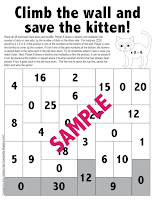Last April, I noticed a tweet from Cara Cahill looking for book loving teachers interested in creating a book study group. I responded along with about ten other teachers from around the United States and #BOOKQUEST was born. After several tweets to authors active on Twitter, our group secured several ARCs. An ARC is an advanced reader's copy released for promotion before the official publish date. Once one of the #BOOKQUEST members finishes a book, it is mailed on to the next teacher on our list. We discuss books on Voxer and leave post-it notes on the books before we send on to the next member.
As a life-long book geek, I've found it really exciting to read advanced copies of books. It's like being let in on a huge secret. In one book the first chapter started with a gray box and the words Art to Come. At first I thought it was a clue to the story, but felt silly when I saw the same box at the beginning of the next chapter. The art wasn't ready yet. The publisher was leaving a blank space for the art.
Although I have to mail the books on to the next member on the list after I finish, I'm adding the release dates to my calendar. I want to be able to add a copy of each to my classroom library. All of the ARCs I've received have been excellent and I can't wait to share them with my students. Below I've included a short review of the ARCs I've read. Two more came today, so I hope to be able to post reviews of those for my readers later this week. Once again, Twitter has expanded my professional horizons.
The Adventurer's Guide to Successful Escapes by Wade Albert White
Anne has spent her whole life at Saint Lupin's Institute for Perpetually Wicked and Hideously Unattractive Children, but I can assure you that Anne is most certainly neither wicked or unattractive. She is brave, loyal and determined to find out where she came from. I'm afraid that giving any more information might spoil this wonderful book for the reader. It is the type of book that should be unrolled slowly in layers like a delicious, flaky cinnamon roll. Each plot twist and turn should be savored. This unique book has the magic and mystery of Harry Potter, the adventure of a Lightning Thief quest along with a vague connection to the television show Lost. This is a must read. I have no doubt it will become a classic and look forward to reading the next installment in the series.
Publisher: Little, Brown and Company
Release Date: September 2016
Lou Lou and Pea and the Mural Mystery by Jill Diamond
Lou Lou loves gardening and admires her best friend, Pea's excellent manners and fluent Spanish. Minor crimes start happening in their beloved neighborhood, so Pea and Lou Lou set out to find the culprit. Although Lou Lou and Pea are polite and kind to everyone, they are also independent, intelligent and resourceful. I loved getting to know both of them and think they are excellent role models for young girls. It is a darling book and recommended for ages 8-12.
Publisher: Frarrar Straus Giroux Books for Young Readers
Release Date: October 18, 2016
The Sweetest Sound by Sherri Winston
Called Mouse by her friends and family, Cadence Jolly is an introvert in every sense of the word. She learns to find her voice and embrace the talent she is hiding from everyone. In a world of Pippi Longstockings, Junie B Jones and Clementines it is interesting to peek into the life of a very different character. I think many students will identify with her shyness. Unfortunately, it is still rare to come across an African American main character in middle grade novels. Cadence, her family and friends are realistic and authentic characters. I look forward to reading this aloud to my students in January.
Publisher: Little, Brown and Company
Release Date: January 2017











































